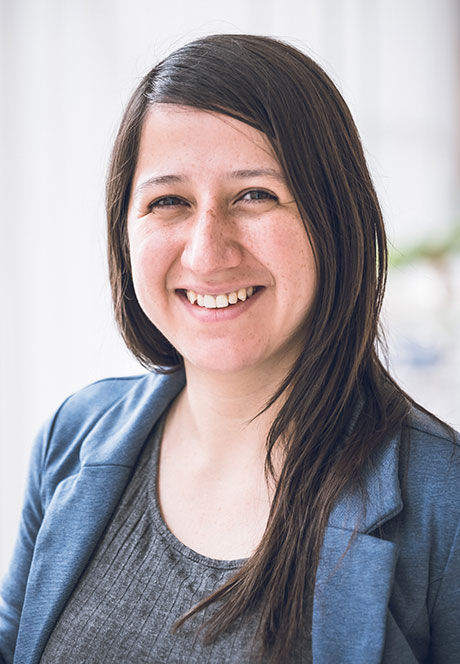

- Home
- About Us
-
Employment
- Technical Work
- USSP
- Reference Documents
-
Travel
Meet the People of IAEA Safeguards
The International Atomic Energy Agency has a world-class, diverse and multi-disciplinary workforce. With more than 2,500 staff working in a wide range of nuclear and related disciplines, it draws on their expertise to ensure the peaceful use of nuclear material and application of nuclear techniques for sustainable development. Here's a profile of one the safeguards professionals hired through the the International Safeguards Project Office.
Interview with Racquel Lovelace
How did you end up at the IAEA? What were you doing before you joined the IAEA?
I have a background in mechanical engineering, and up until the IAEA, all of my work experience was in the automotive industry. I had decided that I wanted to change my career and focus on something that had a better impact on the environment. I went back to school to study nuclear engineering and had recently finished my master's degree before I began looking for work in the nuclear industry.
What have you learned about yourself while working at this capacity?
One of the more unexpected things I learned about myself while working at the IAEA was realizing how important it is for all of us in the industry to help educate the general public on what we have to offer. Working in a controversial field such as nuclear energy is always a conversation starter, and I believe most people are interested in what you have to say. It's been important for me to be able to give accurate information to those who are interested in learning more about nuclear.
How will working at the IAEA enhance your career?
Breaking into the nuclear workforce proved to be more difficult than I thought. Nuclear is a very niche industry, and though there seems to be plenty of job opportunities, I didn't have the nuclear experience typically required or a means to get it. Working at the IAEA has allowed me to gain experience in the nuclear field under the guidance and advice of nuclear experts from around the world. This experience is invaluable to my career.
What is the most interesting thing that has happened to you since you started working at the IAEA?
An instrument that I helped design has been deployed for testing at several nuclear facilities. Knowing that my work is going to improve verification of nuclear materials in areas across the world has been interesting to know.
What is it like living and working in Vienna?
I absolutely love living and working in Vienna. The culture is very different from that of the United States. Though it takes some getting used to, once you start to embrace the differences, everything becomes a fun experience. Vienna is a big city but has a small feel. There's a lot to do, and if you can't find something to your liking, then it's a hop-skip-and-a-jump away to another great European city.
How is working abroad at the IAEA different than working in the United States?
I found the greatest differences in work culture are the higher value placed on work-family balance and the more far-reaching impact of your work. At the IAEA, you're encouraged to take time away from work for yourself and your family. At the IAEA, it is understood that policies, new equipment, and other initiatives will have a direct impact on people all over the world.
What would you say to those who are hesitant to apply?
Don't hesitate! There's a way to overcome whatever reservations you might have, and people to help you along the way. The experiences that you'll have working at the IAEA and living in Vienna are unique and worth it.

Racquel Lovelace
Junior Professional Officer
Associate Instrumentation Engineer
Division of Technical and Scientific Services


